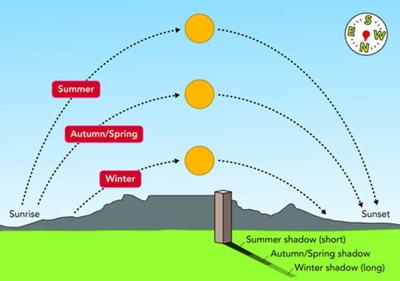The sun is responsible for our climate and weather so maybe when winter comes along it feels a bit blue

The Sun: The Ultimate Driver of Our Climate and Weather

The Sun, the fiery ball of energy at the center of our solar system, is undeniably the most influential factor affecting our climate and weather patterns. It radiates immense heat and light, providing the energy necessary for life on Earth. Without it, our planet would be a desolate, frozen wasteland. It is no surprise then that changes in the Sun’s activity have a direct impact on our weather systems, and sometimes even on our moods.
When we talk about climate, we refer to the long-term patterns and trends in weather conditions. The Sun plays a crucial role in driving these changes. Its energy drives the Earth’s water cycle, heats the atmosphere, and sets the stage for the formation of various weather systems. The Sun’s rays reach our planet, warming the surface and oceans. This heating creates a circulation of air masses, leading to the formation of winds, storms, and other atmospheric phenomena.

As the Earth orbits the Sun, its tilt and rotation create the changing seasons. During summer, the Sun’s rays hit the Earth more directly, resulting in warmer temperatures. In winter, the angle of the Sun’s rays changes, leading to less direct sunlight and colder temperatures. This annual dance between the Earth and the Sun forms the basis of the four seasons we experience.
However, the Sun’s influence on our weather is not limited to just the changing seasons. Solar activity, such as sunspots and solar flares, can have a more immediate impact on weather patterns. Sunspots are dark patches on the Sun’s surface, and their frequency varies over an 11-year cycle. These variations can affect the amount of energy the Sun emits, ultimately impacting our climate. Some researchers even suggest a correlation between periods of low solar activity and cooler winters, although this relationship is still a subject of ongoing study.
In addition to its impact on climate, the Sun can also affect our mood. During the winter months, when the days become shorter and sunlight is scarce, some people may experience a condition known as Seasonal Affective Disorder (SAD). This disorder, commonly referred to as winter blues, is believed to be linked to the reduced exposure to sunlight. The lack of sunlight can disrupt our circadian rhythm and affect the production of serotonin, a hormone that influences mood.
In conclusion, the Sun is undeniably the primary driver of our climate and weather systems. Its energy shapes our seasons, influences atmospheric circulation, and impacts the formation of various weather patterns. Understanding the Sun’s role is crucial for comprehending and predicting the changes occurring in our environment. So, the next time winter comes along and you find yourself feeling a bit blue, remember that it’s not just your imagination - the Sun’s influence on our climate is far-reaching and ever-present.
Source: National Aeronautics and Space Administration (NASA)
Tags
Share
Related Posts
Quick Links
Legal Stuff

